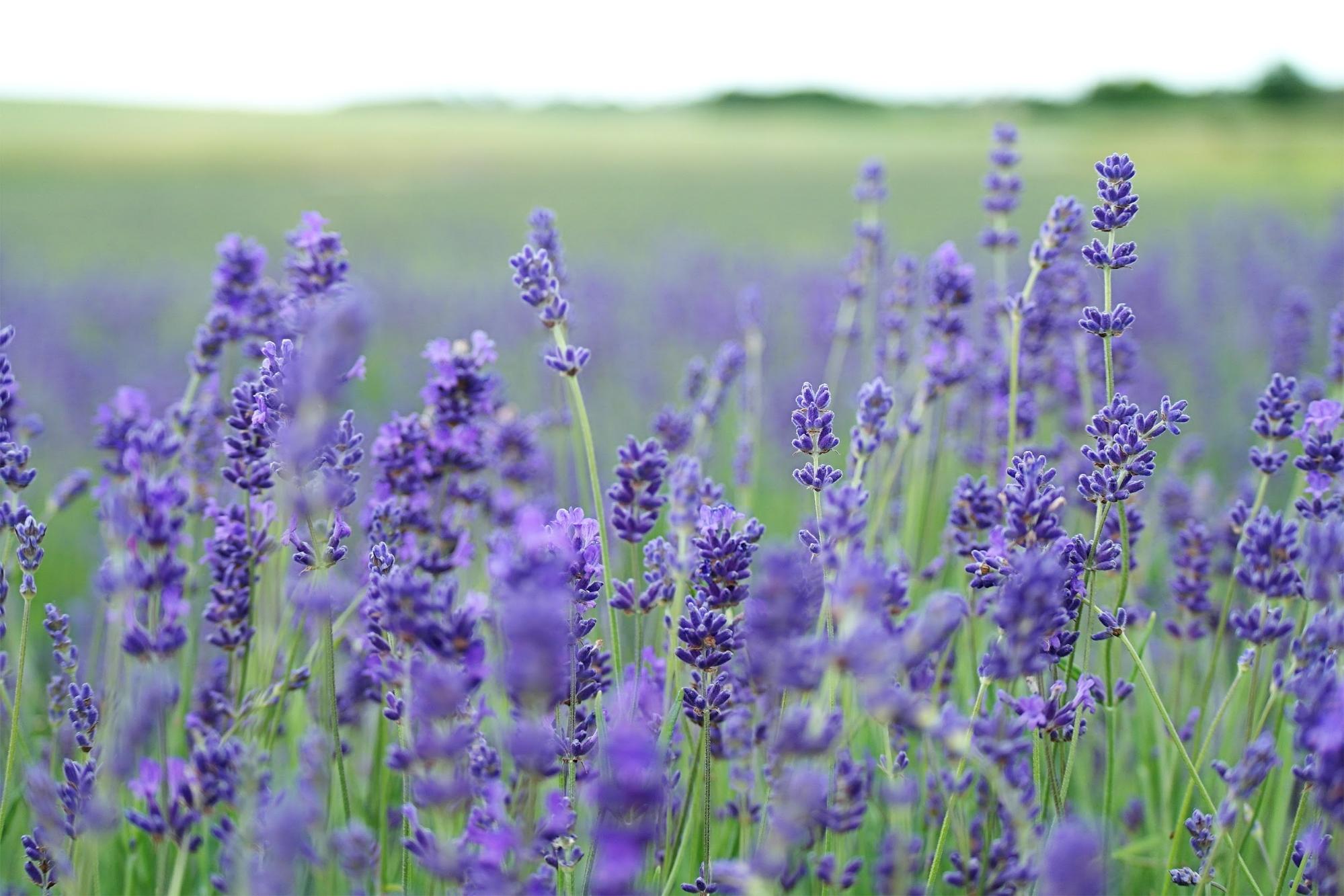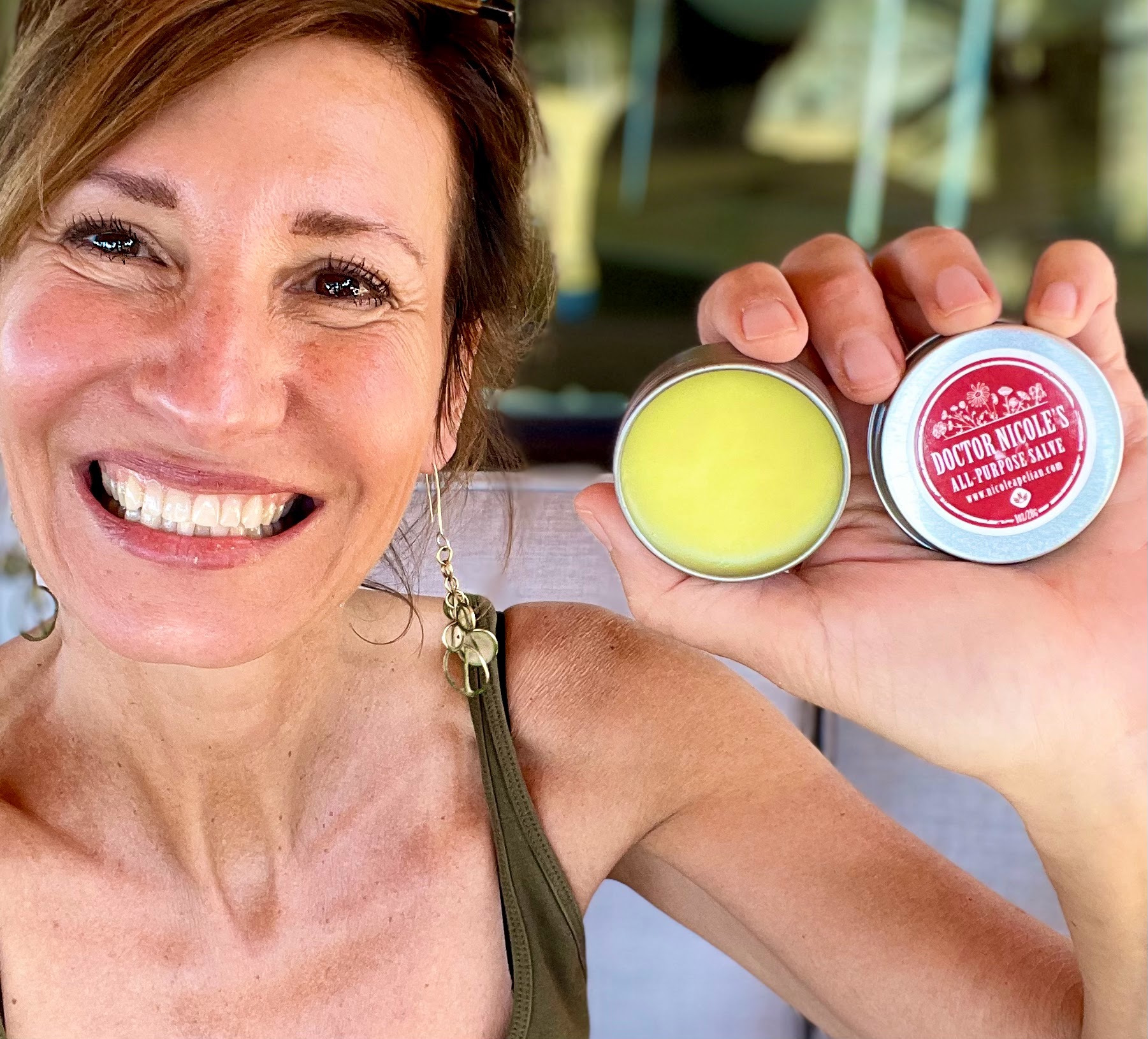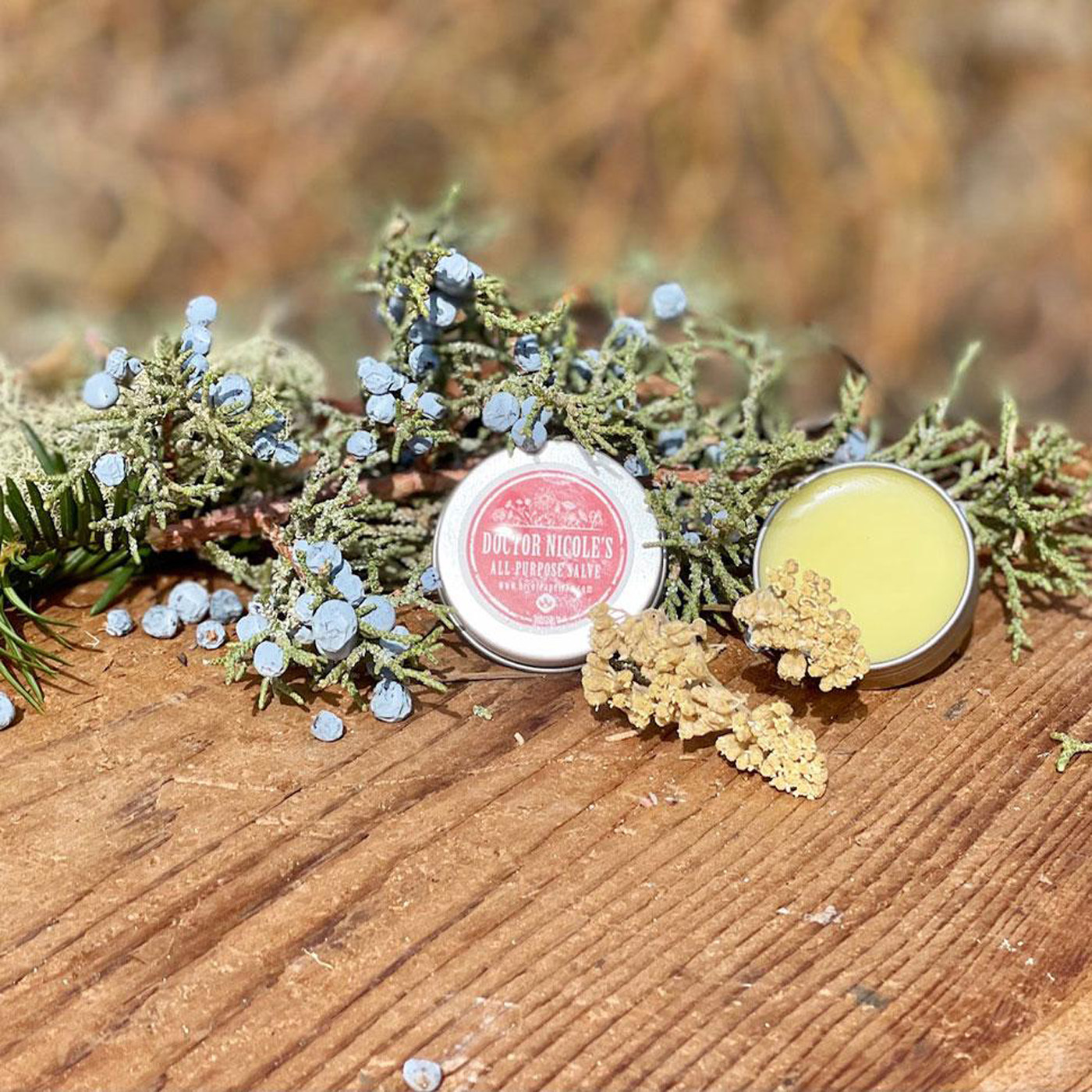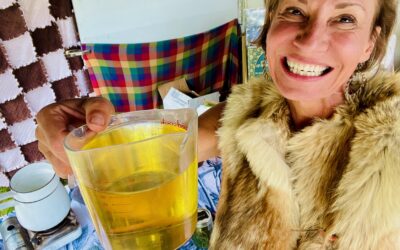A Clean Approach to Summertime Skincare
With hot summer weather in full swing, there is a good chance you are seeking less toxic methods to prevent and heal sunburn. Time spent at the beach, BBQs with friends and family, and plenty of outdoor time increases the risk for you and your family. While we want to forgo chemical sunscreens, it doesn’t mean you need to ditch them altogether — there are plenty of natural alternatives to choose from that will keep you and your loved ones protected from the sun and safe from harmful ingredients. If you do happen to experience a sunburn, I’ll cover natural methods to help soothe the skin and support recovery.
Understanding UV Damage
I think it is safe to say that most of us have had the unfortunate experience of a sunburn at one point or another. But what exactly is a sunburn and why is it dangerous? In short, it is inflammation of the skin due to overexposure to ultraviolet radiation from sunlight. Your skin has an ingenious mechanism of protection against this UV radiation: the production of melanin pigment. This is the same substance that gives you a tan. But when exposure to UV light is over and above what your body can handle, sunburn arises. It comes as no surprise that those with fairer skin (i.e. less melanin) will burn more quickly (sometimes in as little as 15 minutes) than someone with an abundance of the pigment. Symptoms of sunburn not only include the telltale redness, but also skin that is hot to the touch, pain, itchiness, and swelling, along with fluid-filled blisters, fever, nausea, and fatigue for severe sunburn. Sun poisoning (a type of allergic reaction to sunlight) can cause hives, chills, fever, or nausea. Sunburn might not be immediately apparent and may take 24-36 hours to worsen. Generally, most sunburns resolve in 3-5 days.
Ultimately, it is best to avoid sunburn altogether as it not only ages your skin prematurely by breaking down collagen and causing oxidative stress, but it also increases your chance of skin cancer — even from just a single sunburn. Five or more blistering sunburns and you raise your risk to 80% of developing deadly melanoma skin cancer. And the earlier you were exposed to sunburn in your lifetime, the higher the risk — which is why it is important to protect babies and children from the sun.1 It is crucial to keep an eye out for new growths, patches, spots, or sores on your skin that don’t heal within several weeks. Also, watch for changes in color, shape, or size of existing moles.

Natural Alternatives to Conventional Sunscreen
As we have seen, avoiding sunburn is exceedingly important. But we also don’t want to drench ourselves in toxic chemical sunscreens either. Here are examples of how to stay safe without putting a damper on summer fun:
- Time outdoor activities before 10 AM and after 4 PM to avoid the strongest UV rays.
- Wear a wide-brimmed hat to protect the face, ears, and neck from sun exposure.
- Long-sleeve shirts and pants in breathable, lightweight materials are a good choice for reducing excessive exposure to UV rays. Consider a swim shirt for water sports to protect the back and shoulders — two key areas that often burn in the summertime.
Here are a few examples of natural sunscreens: sesame oil resists 30% of UV rays, while olive, coconut, peanut, and cottonseed oils block around 20%. Raspberry seed oil is also a good option as it helps to absorb UVB and UVC radiation. It’s also rich in antioxidants and skin-healing vitamins A and E. When applied topically, green tea is an outstanding choice as it is anti-inflammatory and antioxidant. One study found that it also reduced the formation of sunburn and melanoma cells, while reducing DNA damage from UV radiation.2 However, for full-spectrum ultraviolet protection, you will need to include titanium dioxide or zinc oxide.
While these precautions are helpful to avoid sunburn, it’s important to note that some exposure to the sun is beneficial as it triggers the production of vitamin D. Sunlight is also crucial for your circadian rhythm, which regulates a long list of functions from sleep to alertness and overall health. The key word here is moderation: enough sun exposure for wellbeing, but not to the point of damaging your skin.
The Importance of Hydration and Antioxidants
You can also protect against sunburn from the inside out by making sure you stay hydrated and consume an abundance of antioxidant-rich foods. Good examples include berries of all stripes, dark leafy greens, and brightly colored fruits and vegetables. Watermelon and oranges are particularly helpful choices as they contain skin-healing vitamin C and have a high water content. Coconut water is also excellent for hydration due to electrolytes.
Beta carotene-rich foods (carrots, sweet potatoes, cantaloupe, spinach), tomato paste with olive oil, and pomegranate are especially helpful for the skin. Beta carotene helps to build up a protective layer against UV radiation, while also promoting elasticity, hydration, and resistance to wrinkles.5,6 One study showed that daily consumption of 55 grams of tomato paste with ten grams of olive oil over twelve weeks helped to reduce skin reddening when exposed to sunlight. The researchers believe the lycopene content in tomatoes has a protective effect on the skin.7 Studies have shown antioxidants found in pomegranate juice also help to prevent reddening of the skin from UV radiation and may protect against cellular damage that can lead to skin cancer.8
Natural Sunburn Help
If you find that you overdid sun exposure and burned your skin, here are several helpful remedies to shorten recovery time and protect against lasting damage:
Aloe vera gel is a classic topical remedy to help cool sunburns and heal. Include a few drops of lavender or peppermint oil to relieve pain and calm inflammation.3,4 The tannic acid in strongly brewed, then cooled black tea applied to the skin assists with healing. Or soak for 30 minutes in an anti-inflammatory, soothing bath by adding a cup of oat flour into lukewarm water. Oats also help to relieve the itching that often accompanies sunburns. Alternatively, add a cup of apple cider vinegar into your bathwater for a healing soak. Chaparral oil and cottonwood bud oil are also great soothers for your skin.

My Favorite Salve for Summertime Relief
In addition to the above remedies and tips, I always keep a tin of our All-Purpose (First Aid) Salve on hand for topical relief for sunburn. It contains powerful organic herbal extracts to cool inflammation, speed healing, relieve pain, and prevent infection. Here are the benefits of each:
Yarrow — Antibacterial and antifungal. Contains anti-inflammatory compounds that help ease swelling and promote healing. Helps to heal open wounds, rashes, skin infections, and itching.
Arnica — Anti-inflammatory. Excellent for bruises, pain, strains, sprains, and swelling.
Calendula — Soothes inflammation. Antifungal and antimicrobial. It encourages collagen production and curbs collagen degradation. Additionally, calendula softens the skin, supports cell rejuvenation, and reduces the appearance of scars. It is known to help with dry skin, wrinkles, and photodamage. Soothes rashes and bites.
Plantain — Anti-inflammatory and antibacterial. Plantain is useful for rashes, as well as for summertime insect bites and stings. It helps reduce infection and calms inflammation, while reducing the sting or itch. Plantain is exceptional for drawing out venom or a stinger.
Balm of Gilead — Extracted from cottonwood buds. Anti-inflammatory, antibacterial, antifungal, and analgesic. Rich in salicylic acids for relief and to reduce swelling. Helps with sunburn, chapped lips, and cold sores.
It is my favorite salve for a variety of summertime needs — from sunburn to insect bites and stings, as well as bruises, cuts, swelling, and chapped lips. Stop by my apothecary today and experience the healing power for yourself!
Nicole Apelian
Nicole’s Apothecary Products in this Post
References
- Florida Atlantic University. (2025, March 12). Blind to the burn: Misconceptions about skin cancer risk in the US. ScienceDaily. www.sciencedaily.com/releases/2025/03/250312124316.htm
- Korać, R. R., & Khambholja, K. M. (2011). Potential of herbs in skin protection from ultraviolet radiation. Pharmacognosy reviews, 5(10), 164–173. https://doi.org/10.4103/0973-7847.91114
- de Cássia da Silveira E Sá, Rita et al. “Analgesic-Like Activity of Essential Oil Constituents: An Update.” International journal of molecular sciences vol. 18,12 2392. 9 Dec. 2017, doi:10.3390/ijms18122392
- Silva, G. L., Luft, C., Lunardelli, A., Amaral, R. H., Melo, D. A., Donadio, M. V., Nunes, F. B., de Azambuja, M. S., Santana, J. C., Moraes, C. M., Mello, R. O., Cassel, E., Pereira, M. A., & de Oliveira, J. R. (2015). Antioxidant, analgesic and anti-inflammatory effects of lavender essential oil. Anais da Academia Brasileira de Ciencias, 87(2 Suppl), 1397–1408. https://doi.org/10.1590/0001-3765201520150056
- Balić A, Mokos M. Do we utilize our knowledge of the skin protective effects of carotenoids enough?Antioxidants (Basel). 2019;8(8):259. doi:10.3390/antiox8080259
- Stahl W, Sies H. β-Carotene and other carotenoids in protection from sunlight. Am J Clin Nutr. 2012;96(5):1179S-84S. doi:10.3945/ajcn.112.034819
- Rizwan M, Rodriguez-Blanco I, Harbottle A, Birch-Machin MA, Watson RE, Rhodes LE. Tomato paste rich in lycopene protects against cutaneous photodamage in humans in vivo: a randomized controlled trial. Br J Dermatol. 2011;164(1):154-162. doi:10.1111/j.1365-2133.2010.10057.xHenning SM, Yang J, Lee RP, et al. Pomegranate juice and extract consumption increases the resistance to UVB-induced erythema and changes the skin microbiome in healthy women: a randomized controlled trial. Sci Rep. 2019;9(1):14528. doi:10.1038/s41598-019-50926-2






